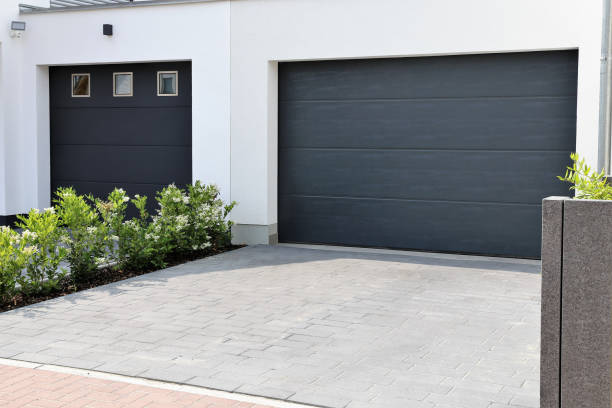As you may know, garage doors play a vital role in keeping your home and property safe. Not only do they keep intruders out, but they also protect your vehicles and other possessions from the weather. That’s why choosing a high-quality garage door that will last for years is essential. But what goes into making these doors? This article will look closely at the materials used in their production.
What materials are used in garage door production, and why are they chosen for this specific application?
The most common garage door materials include wood, steel, aluminum, and fiberglass. Let’s take a closer look at each one.
Wood garage doors are trendy because they offer a classic look that never goes out of style. They’re also easy to maintain and can be stained or painted to match your home’s exterior. However, wood doors are also susceptible to damage from the elements and may require more frequent repairs than other types of doors.
Steel garage doors are solid and durable, making them a good choice for homes in areas with severe weather conditions. They’re low-maintenance and won’t dent or scratch as quickly as other materials. However, steel garage doors can be pretty heavy and may require additional reinforcement for proper installation.
Aluminum garage doors are a good choice for homes in coastal areas or regions with high humidity. They’re also lightweight and won’t rust or corrode over time. However, aluminum garage doors can be dented more quickly than other materials and may require special care to maintain their finish.
Fiberglass garage doors are becoming increasingly popular because they offer many of the same benefits as steel doors but are much lighter in weight. They’re also low-maintenance and resist fading, staining, and corrosion. However, fiberglass garage doors can be more expensive than other materials and may not be as strong as steel doors.
When selecting a garage door, it is critical to consider the environment in your area as well as the specific needs of your home. Wood, steel, aluminum, and fiberglass doors have advantages and disadvantages. Talk to a garage door specialist to determine which material suits you.
How does the manufacturing process work, and what are the critical steps in producing a garage door panel or section?
The manufacturing process for garage doors varies depending on the type of door being produced. For example, wood garage doors are typically made from lumber that is cut to size and assembled with nails or screws. On the other hand, steel garage doors are typically made from sheets of steel that are cut to size and then welded or riveted together.
The critical steps in producing a garage door panel or section usually include measuring, cutting, assembly, and finishing. Measuring is essential to ensure that the door will fit properly in the opening. Cutting is necessary to create the desired shape and size. Assembly combines the pieces using nails, screws, welding, or riveting. Finishing includes painting or staining the door to protect it from the elements and give it a finished look.
What are some of the most common problems that can occur during garage door production, and how can they be avoided?
One of the most common problems during garage door production is incorrect measurements. It can lead to doors that are too small or too large for the opening. It’s important to measure carefully and double-check your work to avoid this problem.
Another common problem is mismatched or damaged pieces. It can happen if pieces are cut incorrectly or damaged during handling. Inspecting the pieces before assembly is essential to ensure they’re in good condition.
Finally, improper installation can cause various problems, such as doors that are difficult to open or close, doors that leak air, and doors that come off the tracks. It’s essential to follow the manufacturer’s instructions carefully and have a professional install the door if you’re not confident in your ability to do it yourself.
Are there any particular features that can be added to a garage door, such as insulation or windows, to make it more functional or attractive?
A variety of special features can be added to garage doors to make them more functional or attractive. For example:
- Insulation can help keep the garage door warm in winter and cool in summer.
- Windows can let in natural light while providing a glimpse of the outside world.
- Decorative hardware can add style and character.
- And garage door openers can make opening and closing the door easier.
By speaking with a garage door specialist, find out which features are available for the type of door you choose.
Conclusion
Various materials can be used to make garage doors, including wood, steel, aluminum, and fiberglass. The type of material you choose should be based on your needs and the climate in your area. The manufacturing process for garage doors usually includes measuring, cutting, assembly, and finishing. Common problems during garage door production include incorrect measurements, mismatched or damaged pieces, and improper installation.



